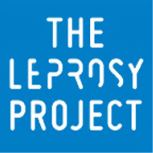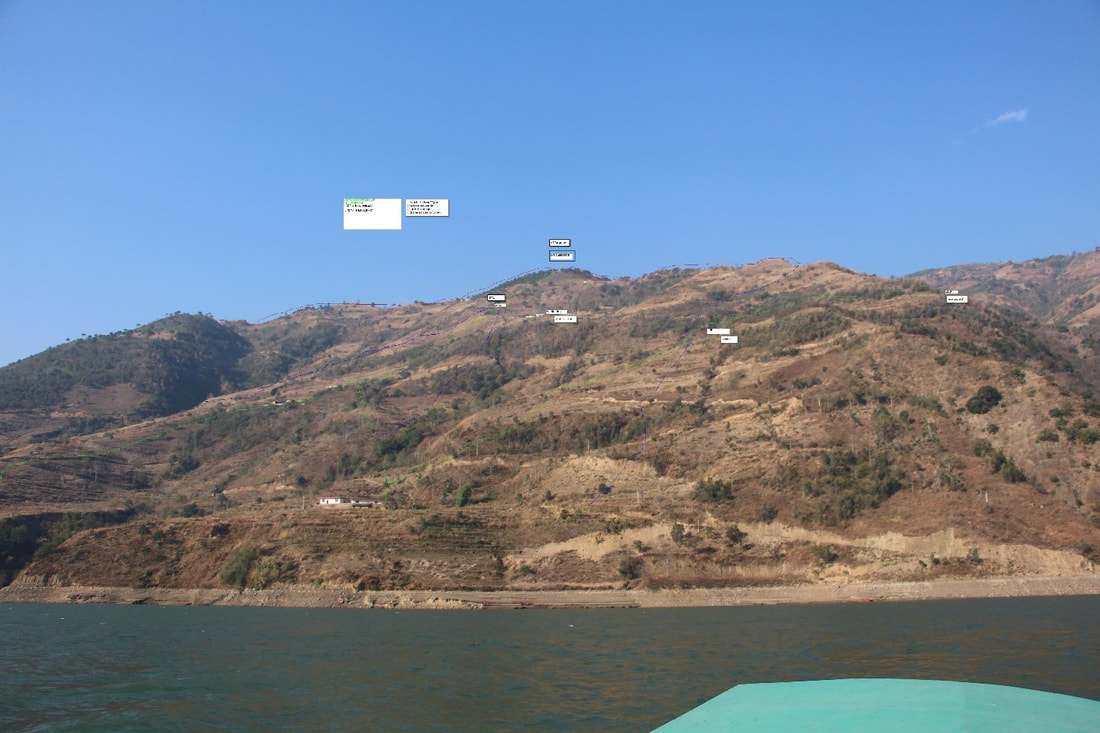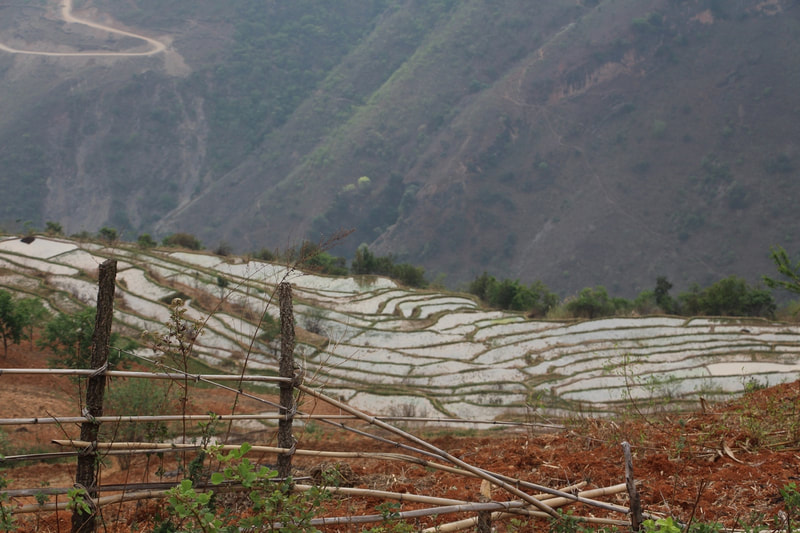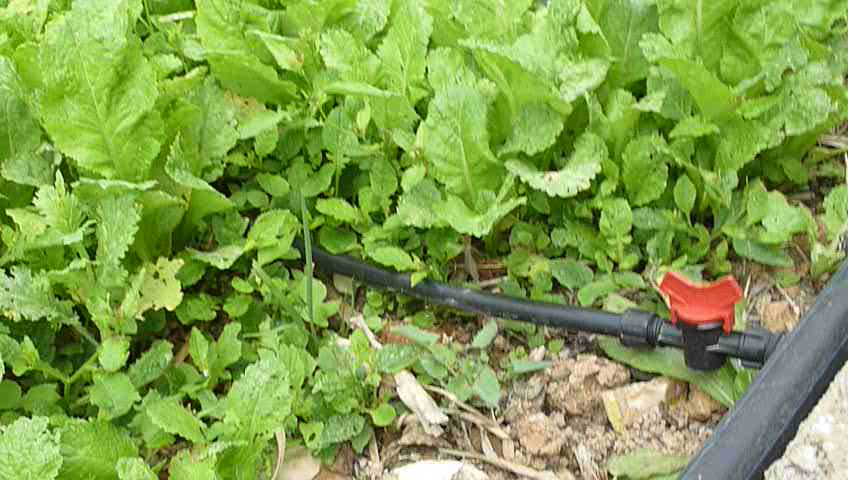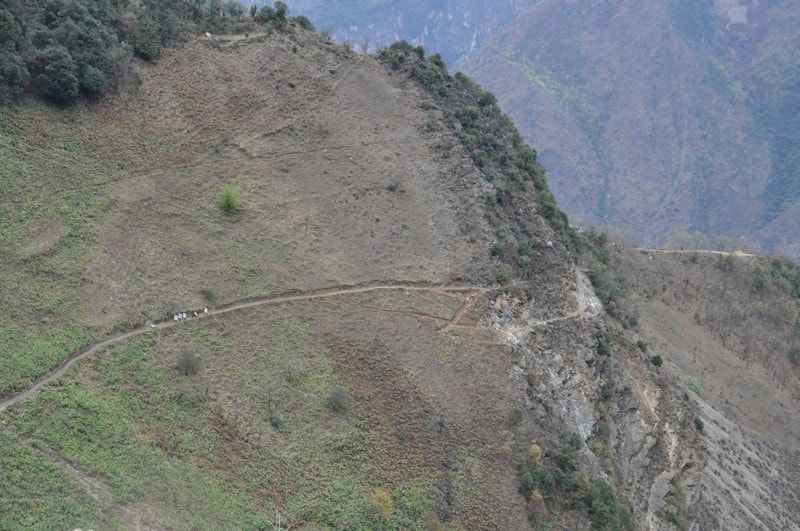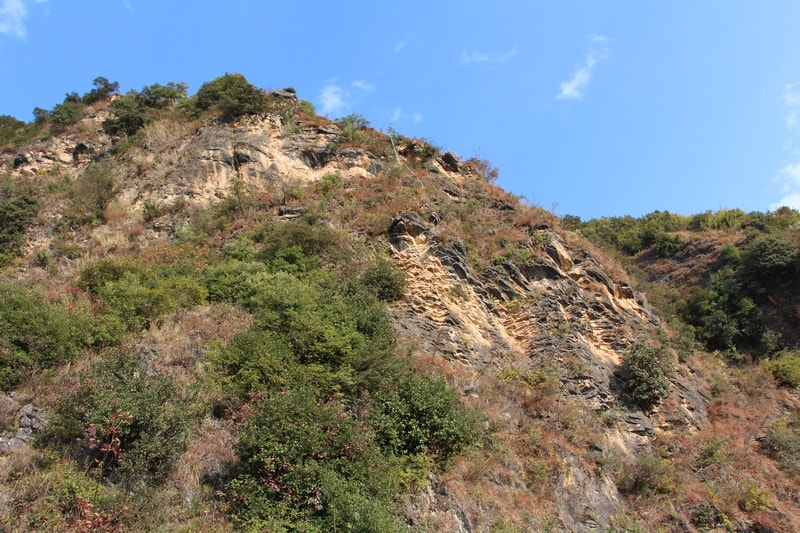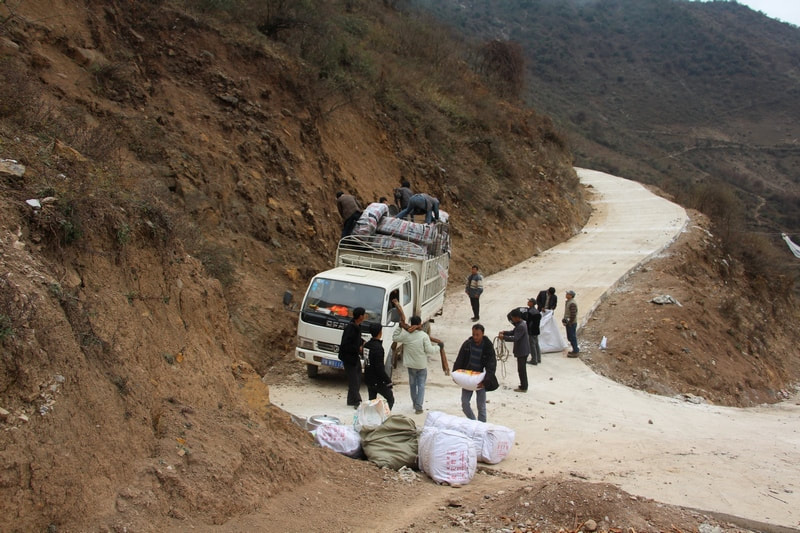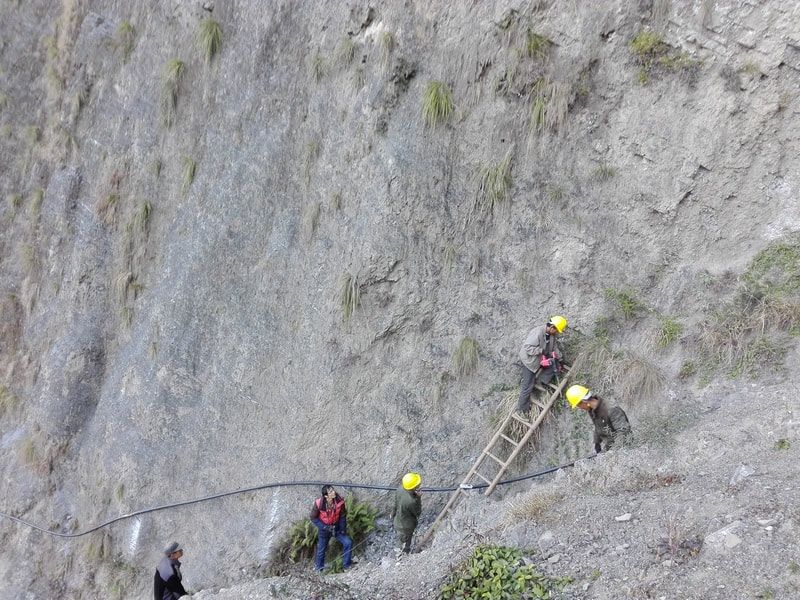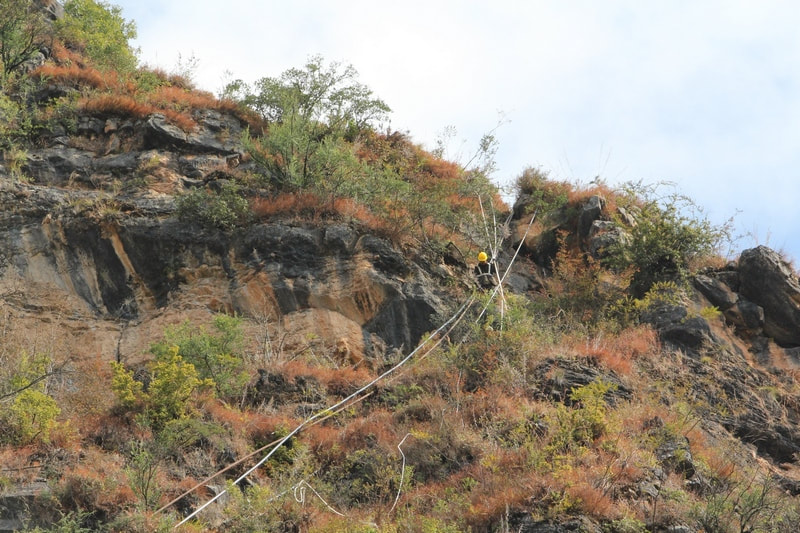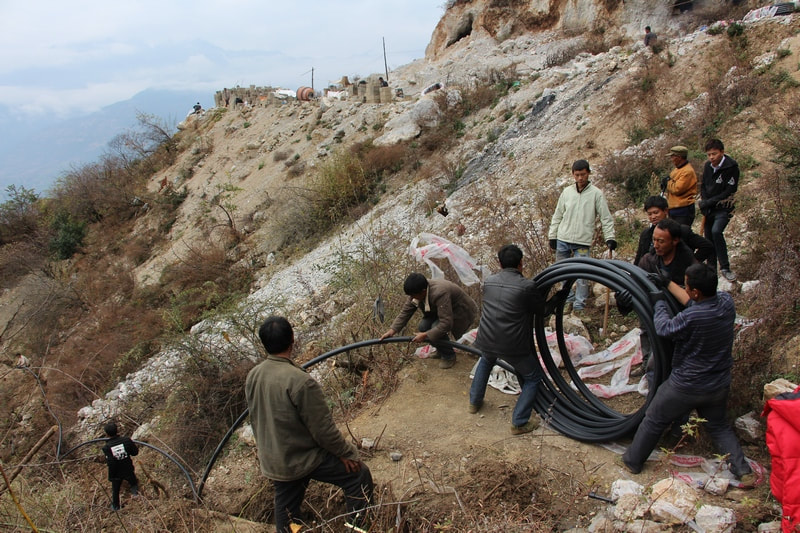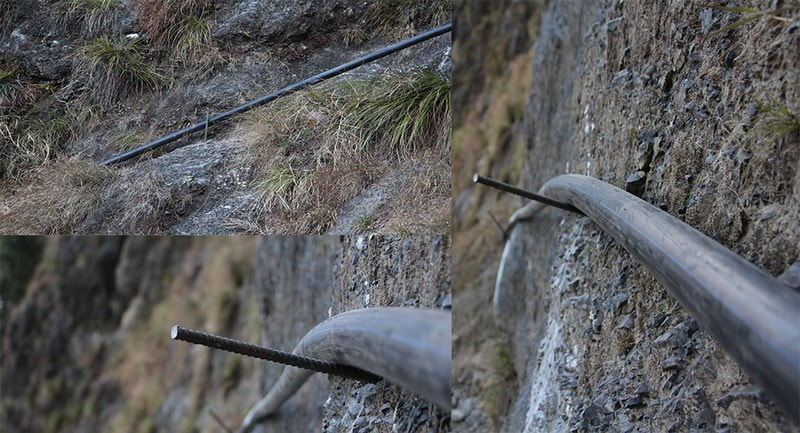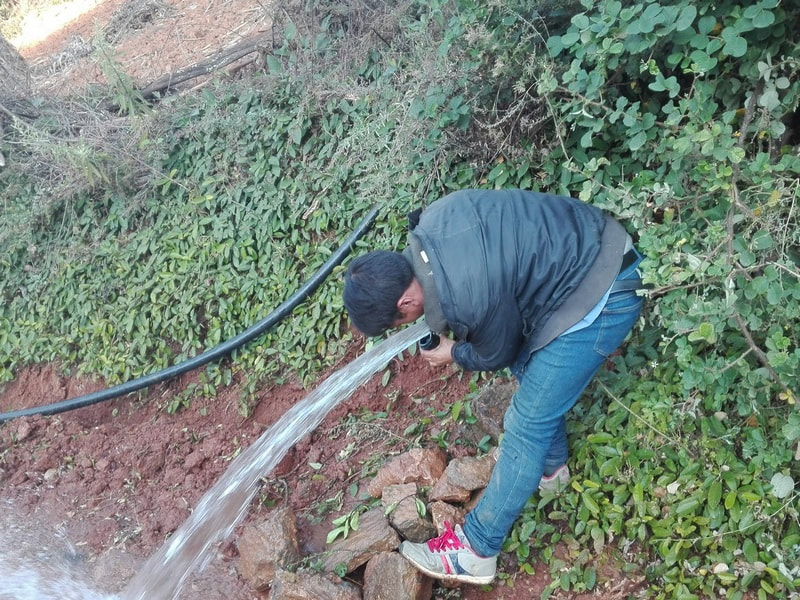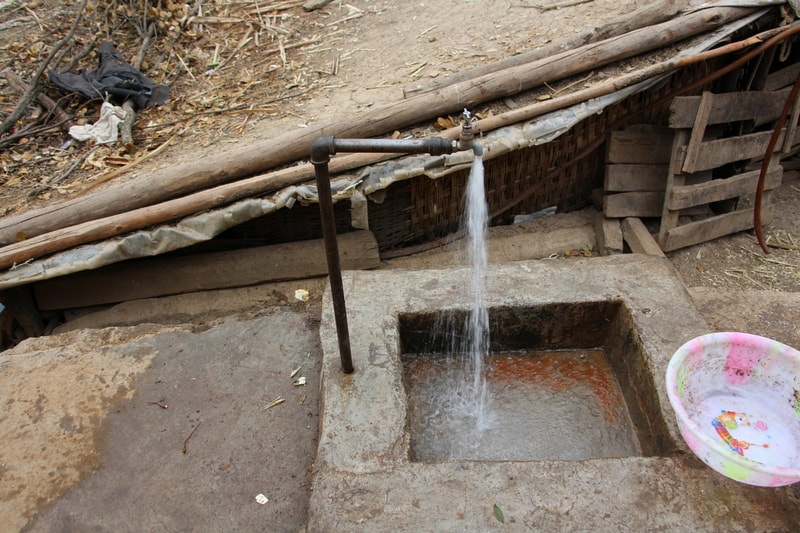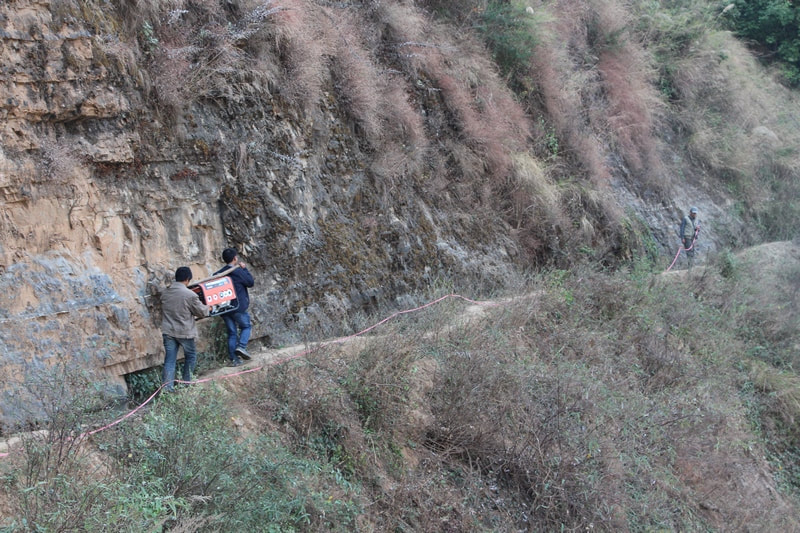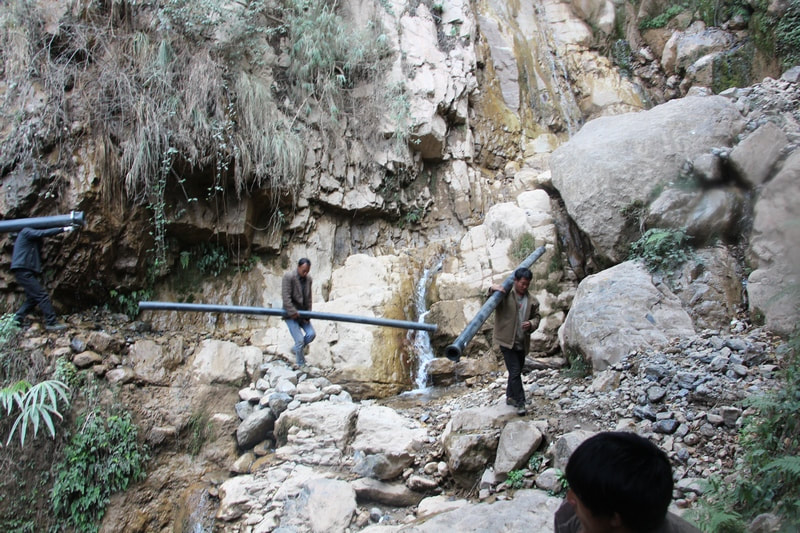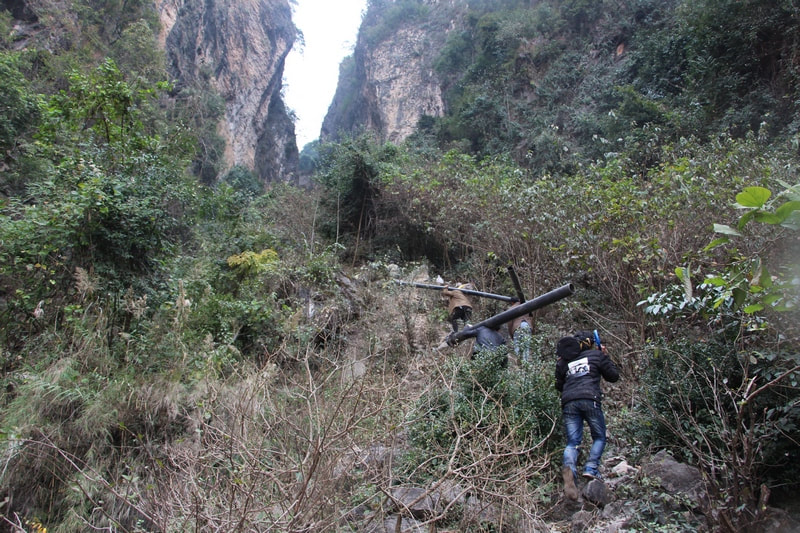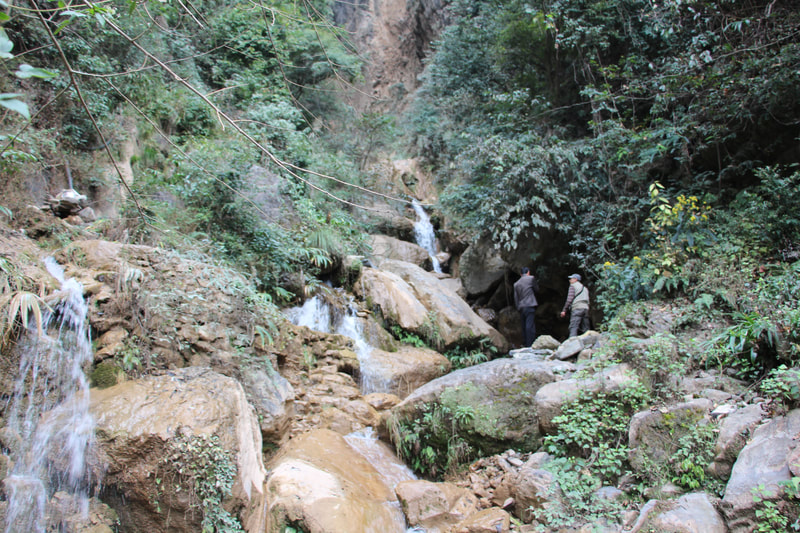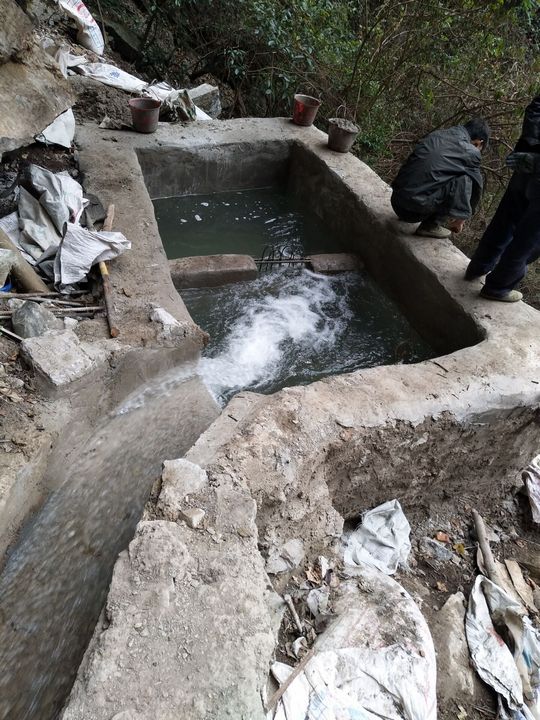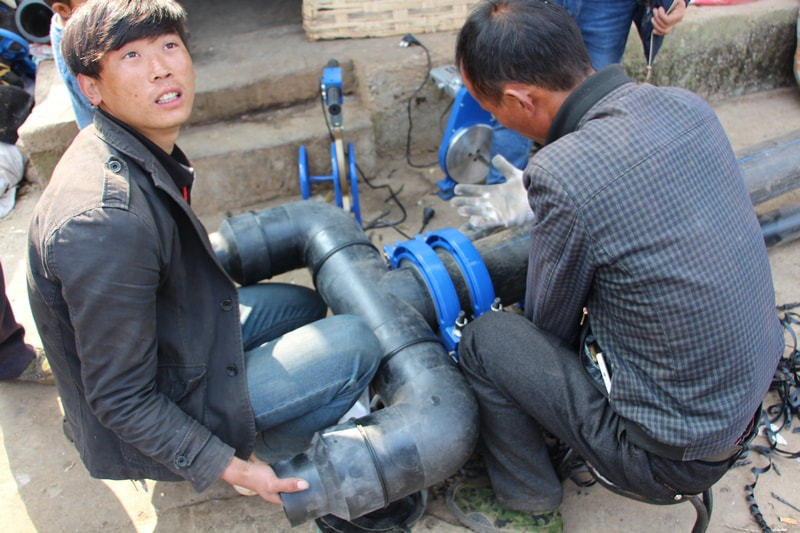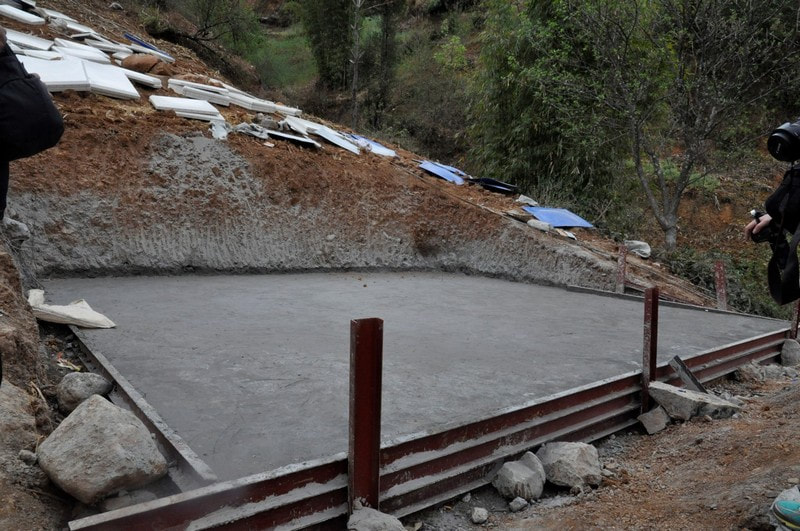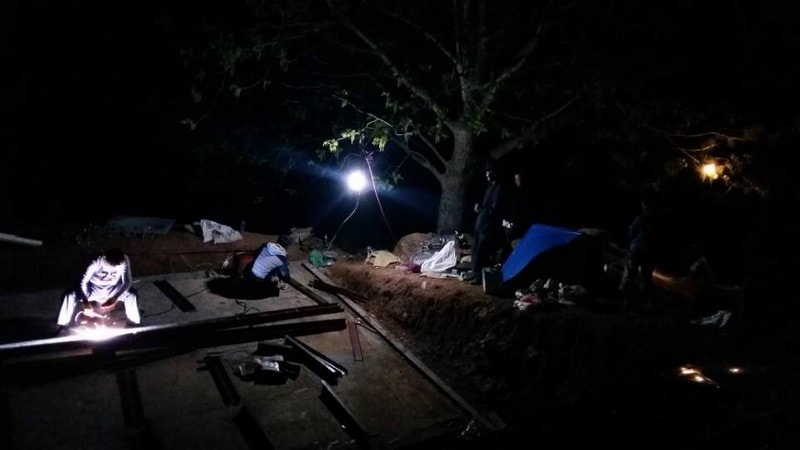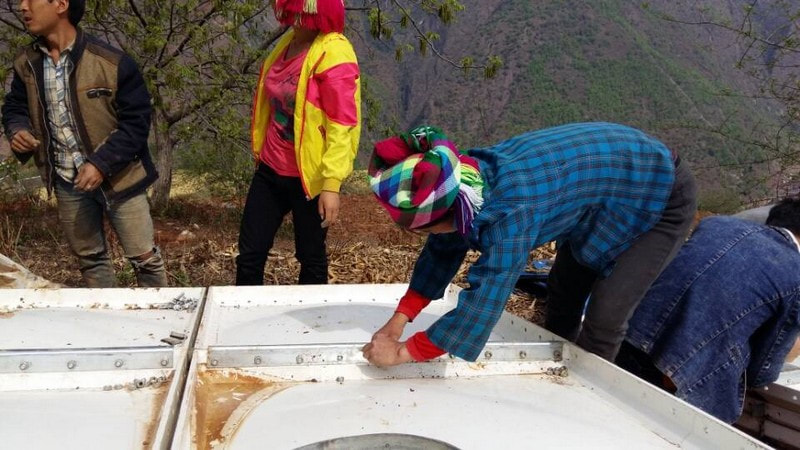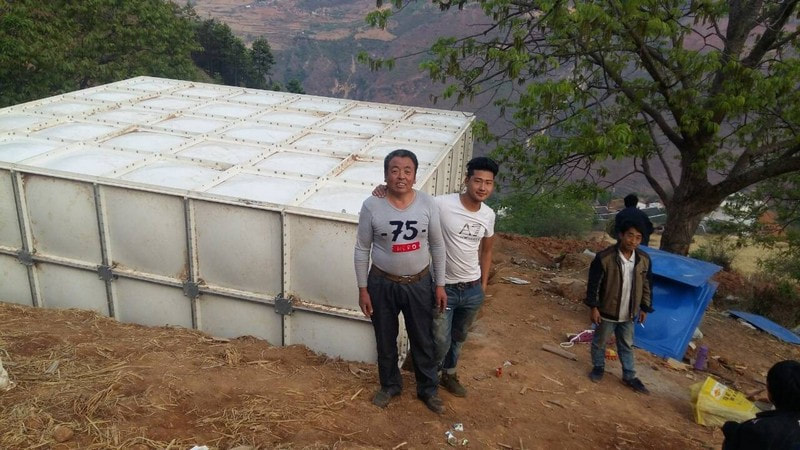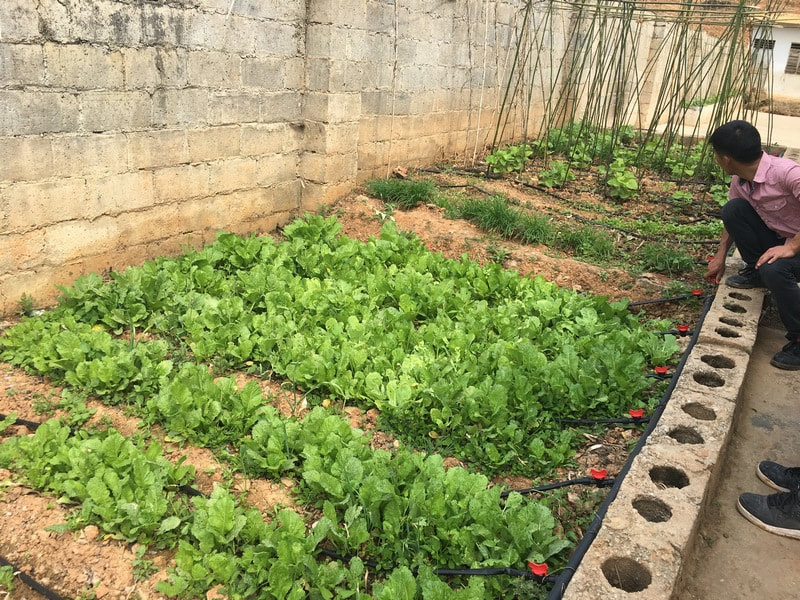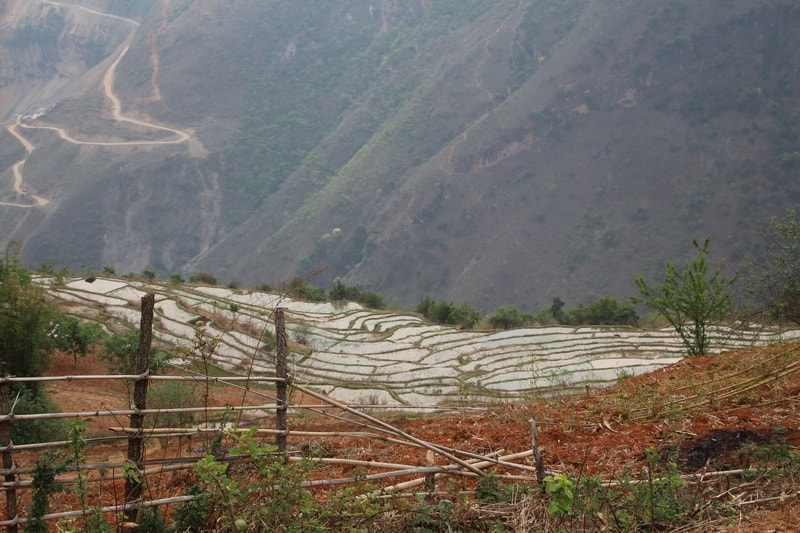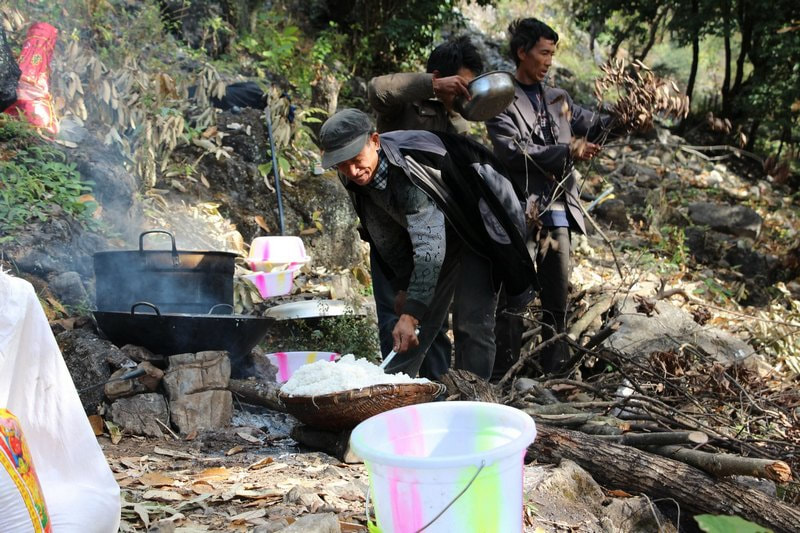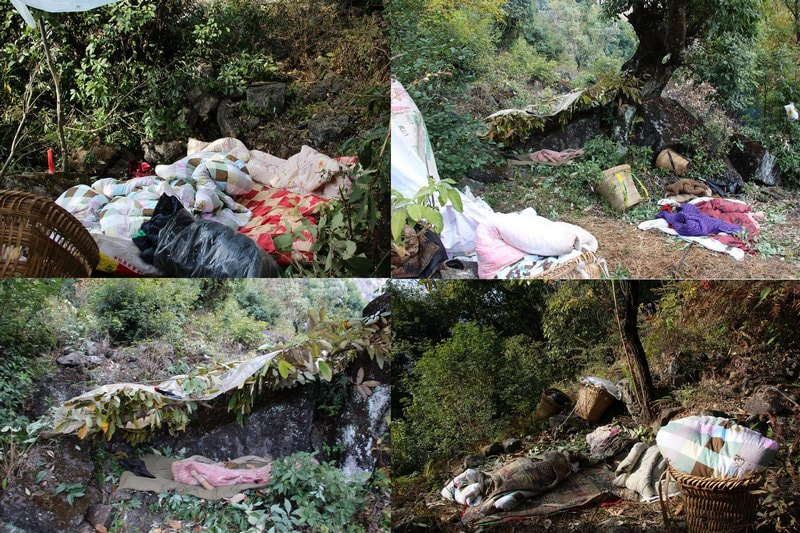UPDATE on jinyang water project
Background:
The Leprosy Project began surveying the area around the villages of Butuo and Jinyang in late March, 2015. The final plan for both phases of the water project in Jinyang was confirmed in the summer 2016. We commenced the Jinyang Water Project in December 2016 after the Butuo Water Project was completed.
After 5 months of hard work, the long-awaited water project in Jinyang was completed with the final installation of the drip irrigation system for the home vegetable gardens for all households. The Leprosy Project invested a total of RMB263,445 in the water project, which involved more than 1500 work trips by the villagers who were required to be involved in both the planning and implementation.
A 60M³ GRP sectional water storage tank for irrigation water was placed in the village and 3 concrete sediment tanks were constructed at the water source. Existing concrete tanks were also repaired. The whole installation included 14,680 meters of pipes. Vegetable gardens covered by the drip irrigation system now cover 3.8 mu and serve the entire village including the school. Every home has water taps installed.
More than 75% of the farmland in the village is covered by the new water system. This totals approximately 315mu, including 20mu of paddy fields. These fields belong to the 163 villagers who live in three village clusters. This is the second-largest water project that The Leprosy Project has implemented.
The Leprosy Project began surveying the area around the villages of Butuo and Jinyang in late March, 2015. The final plan for both phases of the water project in Jinyang was confirmed in the summer 2016. We commenced the Jinyang Water Project in December 2016 after the Butuo Water Project was completed.
After 5 months of hard work, the long-awaited water project in Jinyang was completed with the final installation of the drip irrigation system for the home vegetable gardens for all households. The Leprosy Project invested a total of RMB263,445 in the water project, which involved more than 1500 work trips by the villagers who were required to be involved in both the planning and implementation.
A 60M³ GRP sectional water storage tank for irrigation water was placed in the village and 3 concrete sediment tanks were constructed at the water source. Existing concrete tanks were also repaired. The whole installation included 14,680 meters of pipes. Vegetable gardens covered by the drip irrigation system now cover 3.8 mu and serve the entire village including the school. Every home has water taps installed.
More than 75% of the farmland in the village is covered by the new water system. This totals approximately 315mu, including 20mu of paddy fields. These fields belong to the 163 villagers who live in three village clusters. This is the second-largest water project that The Leprosy Project has implemented.
Conditions at the construction site:
Access to the village is via steep and narrow paths. The delivery of the water pipes, panels for the water tanks and other heavy equipment was difficult and dangerous. Six truckloads were delivered to the top of the mountain above the village. Materials were then transported by foot down to the village, a three hour trek.
Access to the village is via steep and narrow paths. The delivery of the water pipes, panels for the water tanks and other heavy equipment was difficult and dangerous. Six truckloads were delivered to the top of the mountain above the village. Materials were then transported by foot down to the village, a three hour trek.
- Beneficiaries
- Difficulties in implementing the project
- Drinking water
- Irrigation water
- Paddy fields
- Home vegetable gardens
- Input of the project
Input and beneficiaries of the Jinyang Water Project
Total Investment: RMB263,444.66
1 GRP Sectional Water Tanks: Total storage of 60 Cubic Meter
3 Concrete Water Tanks: Total storage of 22 Cubic Meter
160mm PE Pipes: 3250M
110mm PE Pipes: 1280M
50mm PE Pipes: 3950M (500M shall be connected after the road construction has been finished)
32mm PE Pipes: 1700M
25mm PE Pipes: 400M (shall be installed after the road construction has been finished)
20mm PE Pipes: 5000M
Labour Input: More than 1500 work trips by villagers
Results and beneficiaries:
- All 163 villagers from 41 village households, school and the clinic.
- 100% of households installed with water taps at home.
- Total 340mu (75%) of dry land can be irrigated.
- 20mu (100%) of paddy fields can be irrigated.
- 100% of family vegetable fields are covered.
- More than 75% of farming land is covered with the new irrigation system overall. Some villagers who are working outside the village have contacted us saying they would like to come back to the village to farm now there is a new water system.
Technical involvement
- The GRP Sectional Tank was chosen for the project because it is durable, flexible and it comes in panels that can be assembled on site. With this tank we were able to install the size of tank needed for the location. There were, however, many challenges in delivering the panels to the site.
- The GRP Sectional Tank is not known in Liangshan. We had to invite an instructor from the manufacturer in Shandong to instruct and guide the villagers on how to assemble the tank. This was important for future maintenance of the tank.
- We invited villagers from Jinyang to learn how to install and connect water pipes last year during the implementation of the water project in Butuo. Villagers gained valuable experience in overcoming the difficulties of working on dangerous cliffs and slopes. Some of the experienced villagers from Butuo also helped in the pipe connection work in Jinyang. Their work was highly praised by the technicians from the supplier of the water pipes who came to inspect the work.
- The water sources are quite dispersed. This necessitated villagers building small channels which fed into a large channel before emptying into the sediment tank. From the sediment tank water was piped to the village. The sediment tank not only acts as a filter, but also reduces the pressure preventing pipes being broken due to strong water pressure from the source especially during rainy season.
- Two demo vegetable gardens with drip irrigation systems were set up, one in cluster 3 and one at the school which is located in cluster 1. The vegetable gardens were very successful. With another round of funding designated for the drip irrigation, The Project has been installing systems in all the home vegetable gardens in both Butuo and Jinyang. This will soon be complete. Some of the villagers who are working outside also asked the project to install the system in their gardens. They would like to return home and farm with the brand new water system.
Plans for the community
In the past, villages suffered from drought at least 6 months every year. Now they have a consistent source of water flowing out of their taps. Their quality of life has improved significantly.
In the past, villages suffered from drought at least 6 months every year. Now they have a consistent source of water flowing out of their taps. Their quality of life has improved significantly.
- To promote the drip irrigation system for their home vegetable gardens. The produce is for their own consumption.
- To extend the variety of crops and vegetables in order to improve their nutrition and living standards as well as provide extra income.
- To extend another 15-20 mu of paddy fields in next three years after the road construction to the village is completed.
- To plant a variety of fruit trees and trees for income generation, using the support from local forestry department.
Project Expenses
|
Description
Transportation
Delivery of water pipes, water tank parts, and other parts needed for the project Insurance For volunteer labor input GRP Sectional Tanks and concrete platform one 60M³ sectional tank with concrete platform and metal frame Sediment tanks and reparation of existing concrete tanks Materials such as cement, sand, reinforced steels Water Pipes and Necessary Accessories From 20mm to 160mm PE pipes and pipes for drip system of the demo vegetable gardens, different connectors, valves, etc Technician Fees Installing of GRP tanks, including accommodation and meals Total Expenses: |
Amount in RMB
19,337.00
2,200.00 26,058.00 16,322.00 197,636.66 1,891.00 263,444.66 |
